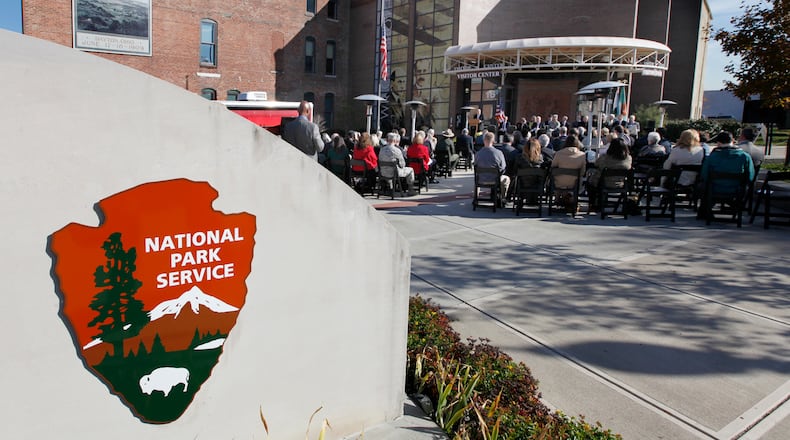“I’m proud to support this effort to bolster the Dayton Aviation Heritage National Historical Park,” Vance said. “This legislation is a well-deserved acknowledgement of the great work the park does to recognize Ohio’s history as the birthplace of aviation.”
The acre would be added around the Wright-Dunbar Interpretive Center complex, 16 S. Williams St., which tells the story of aviation pioneers Orville and Wilbur Wright and the African-American poet Paul Laurence Dunbar.
The change would draw parking lots into the park’s boundaries. The hope is that the change would provide better access with National Park Service wayfinding or visual cues to site locations.
The change would also remove the need to negotiate with park partners to establish maintenance agreements, while creating an entrance that meets National Park Service standards, according to the lawmakers’ offices.
“Ohio’s pioneering spirit is reflected today in Dayton’s National Aviation Heritage Area,” Brown said in a statement issued by the four legislators. “It’s a privilege to represent a state with such important historical significance, and I’m proud to stand with my colleagues in our effort to ensure that the Dayton National Aviation Heritage Area has what it needs to continue to prosper.”
This boundary adjustment is supported by area partners Wright Dunbar Inc., Aviation Trail Inc., and the Wright-Dunbar Neighborhood Association, according to Brown’s office. The National Aviation Heritage Alliance (NAHA) and Air Camp USA also support this request, according to the lawmakers’ offices.
“The Dayton Aviation Heritage National Historical Park is a testament to Ohio’s rich aviation heritage first shown by the Wright brothers’ innovative spirit,” Turner said. “By making certain this historical landmark can operate effectively, we are honoring our commitment to preserving our past and promoting Dayton’s preeminent aviation legacy.”
About the Author

